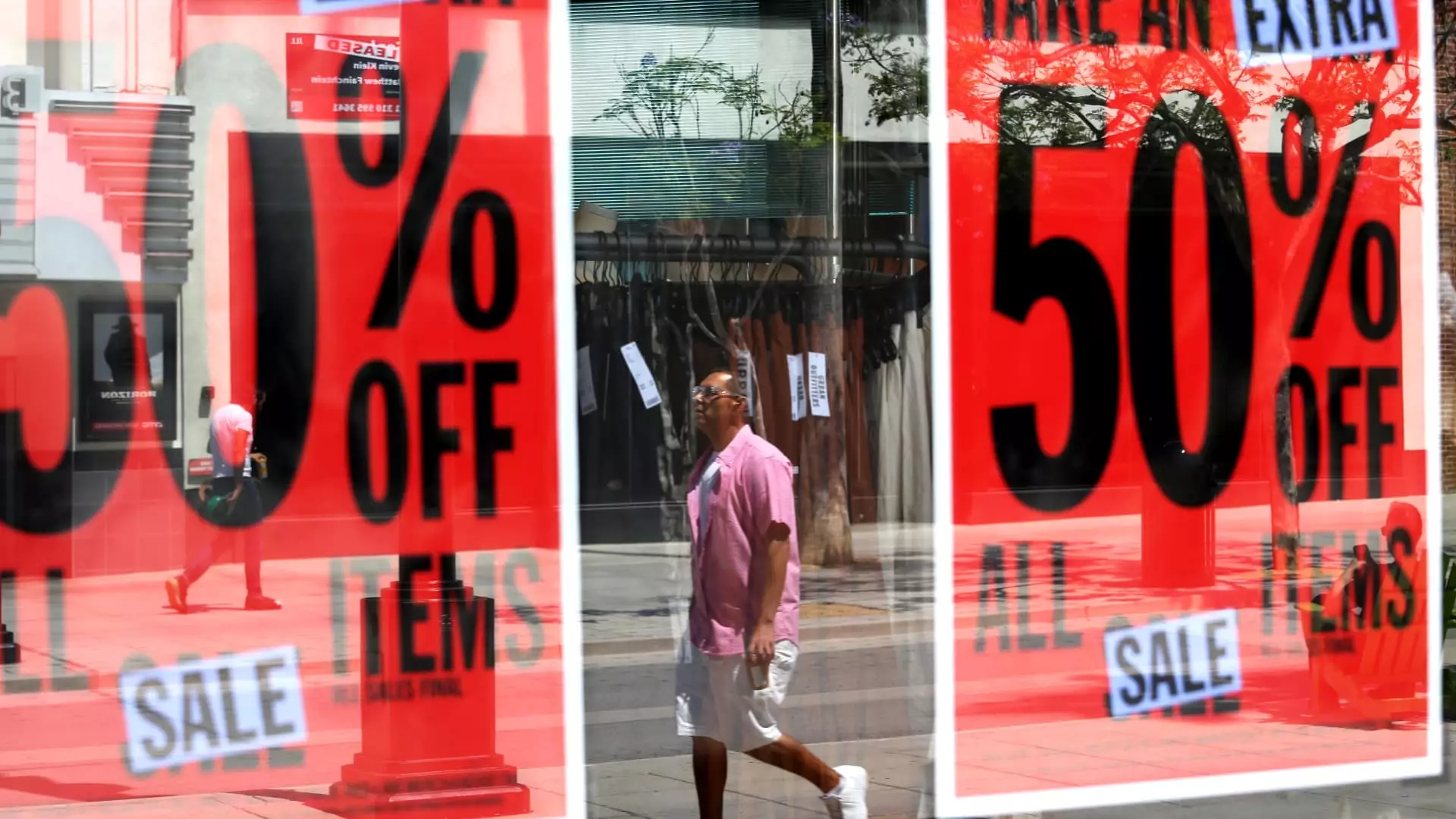In an unpredictable economic climate characterized by President Donald Trump’s controversial trade policies, retailers have metamorphosed their marketing strategies into a reactive dance of urgency and maneuvering. As tariffs loom large, businesses are panicking—trying to capitalize on consumer fears of inevitable price hikes and potential shortages. This chaotic environment propels brands to deploy innovative sales strategies to maintain revenue and prevent a consumer spending slump.
The administration’s announcement of steep tariffs sparked widespread anxiety among retailers. Many have turned to preemptive sales promotions, urging consumers to purchase goods before prices inflate. This has paved the way for companies like Beis, Bare Necessities, and Fashion Nova to creatively leverage the tariff crisis as a marketing tool. While some brands clearly demarcate “pre-tariff sales,” others take a humor-infused approach, addressing the unpredictability head-on with a touch of vulnerability.
The Doom Loop of Consumer Spending
Experts caution that a potential contraction in consumer spending looms on the horizon, engendered by the uncertainty surrounding tariffs. The psychological effects of a shaky economy can stifle consumer confidence, leading to decreased discretionary spending. Many companies, particularly small to mid-sized brands with less leverage and maneuverability, face an existential crisis amidst these uncertain conditions. How is a small-scale retailer to compete against the expansive supply chains of giants like Walmart and Target when tariffs tighten the financial noose?
Larger retailers may possess the luxury of offsetting immediate increases in costs by diversifying their supply chains or absorbing some of the costs for the time being, but smaller brands lack those same resources. Lauren Beitelspacher, a marketing professor at Babson College, points out that smaller companies’ restraint will weigh heavier on their shoulders as tariffs squeeze their meager profit margins. Pre-tariff promotions may prove instrumental for these brands, allowing them to boost cash flow ahead of what could be a severe downturn in sales.
The Dance of Price Manipulation and Consumer Psychology
As companies engage in preemptive markdowns to stimulate sales, a curious dance emerges around price manipulation. While lower prices seem to contradict the impending price increases caused by tariffs, businesses understand that stimulating demand is paramount amid looming uncertainties. This situation prompts a critical question for businesses: how much margin can be sacrificed now to ensure survival in a potentially hostile retail environment later?
Sonia Lapinsky, a partner at AlixPartners, conveys a stark reality: the time to shake the cash tree is now. Retailers are wrestling with the immediate need to convert stock into cash while also battling the specter of stagnant or diminishing demand as consumers adopt a cautious mindset. What better way to blitz the market than by leveraging urgency, embodying both a promotional strategy and a desperate plea for survival?
Humor Meets Crisis: The New Marketing Frontier
When the chips are down, humor often goes a long way. The ability to address a serious economic concern without resorting to doom-laden rhetoric can separate the wheat from the chaff in the retail world. Retailers such as Beis have adopted an approachable and relatable tone in their communications, using humor to navigate a thorny topic that can easily alienate customers based on fluctuating political sentiments.
As Barbara Kahn from The Wharton School points out, many brands are intentionally refraining from political engagement. The goal? To diffuse the divisive nature of tariffs. Sharing the financial struggle with a laugh can build rapport, drawing customers in rather than pushing them away during an already tough time. It also cleverly masks the underlying tension associated with pricing—an astute maneuver in today’s volatile market.
Trendspotting: Short-term Gains vs. Long-term Strategy
The strategic choices made by retailers amid this tariff-induced turmoil may herald long-lasting changes in how consumer behavior is shaped and responded to. By harnessing both urgency and humor, brands are not just chasing short-term gains; they may also be redefining their long-term strategies in the face of inherent struggles.
From limited-time offers to reactionary pricing, today’s retail landscape feels liquidity-driven, reliant on tapping consumers’ fear of rising costs. What remains to be seen is whether these strategies yield fruit or further complicate the relationship between retailers and customers. The retail sector is at a crossroads, and the path taken now will invariably determine the legacy of retailers for years to come.

